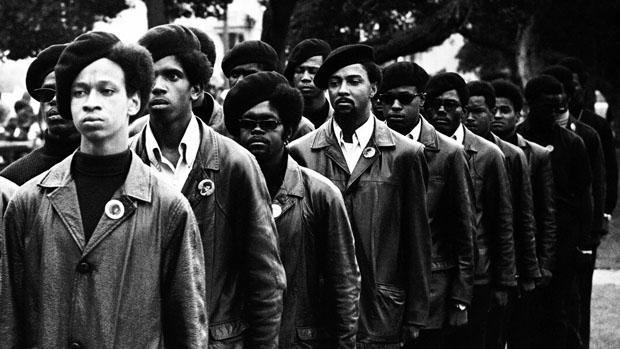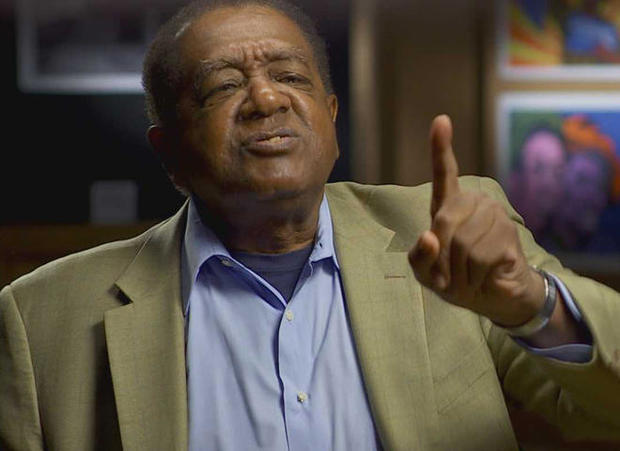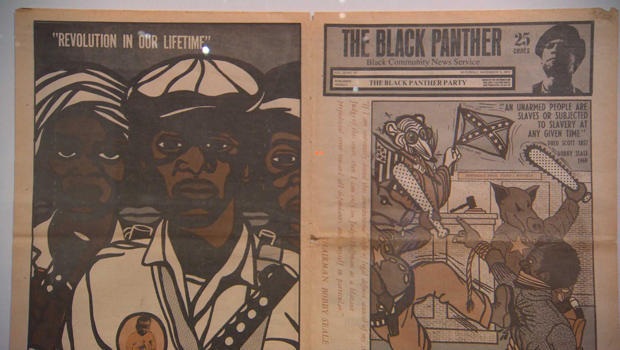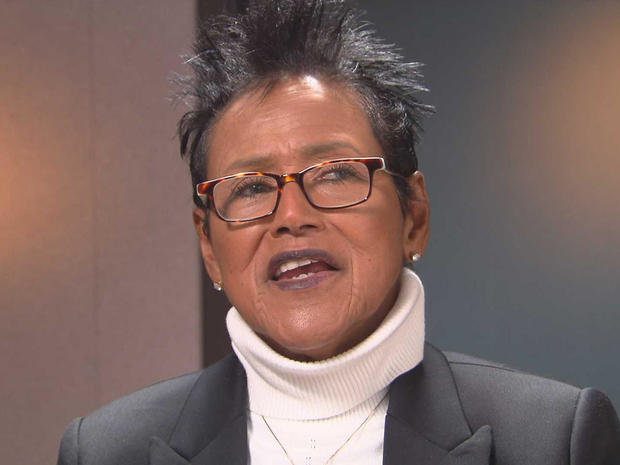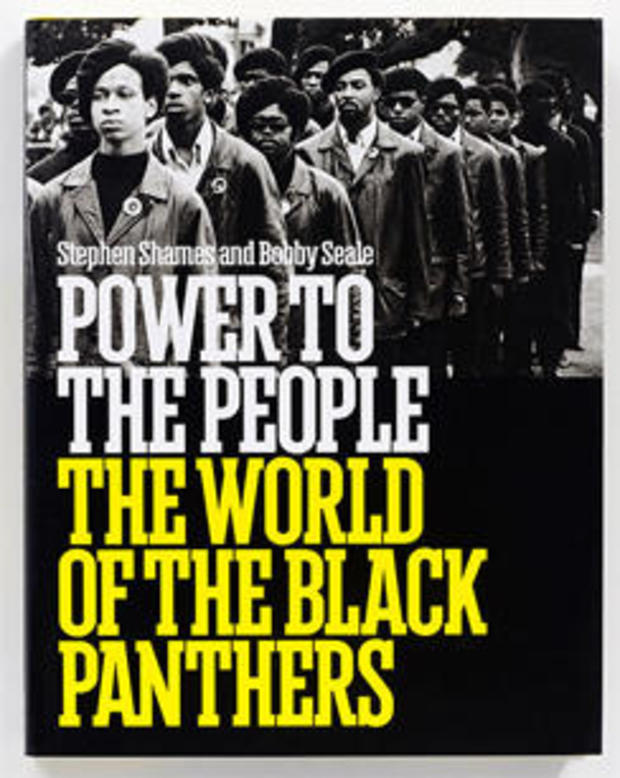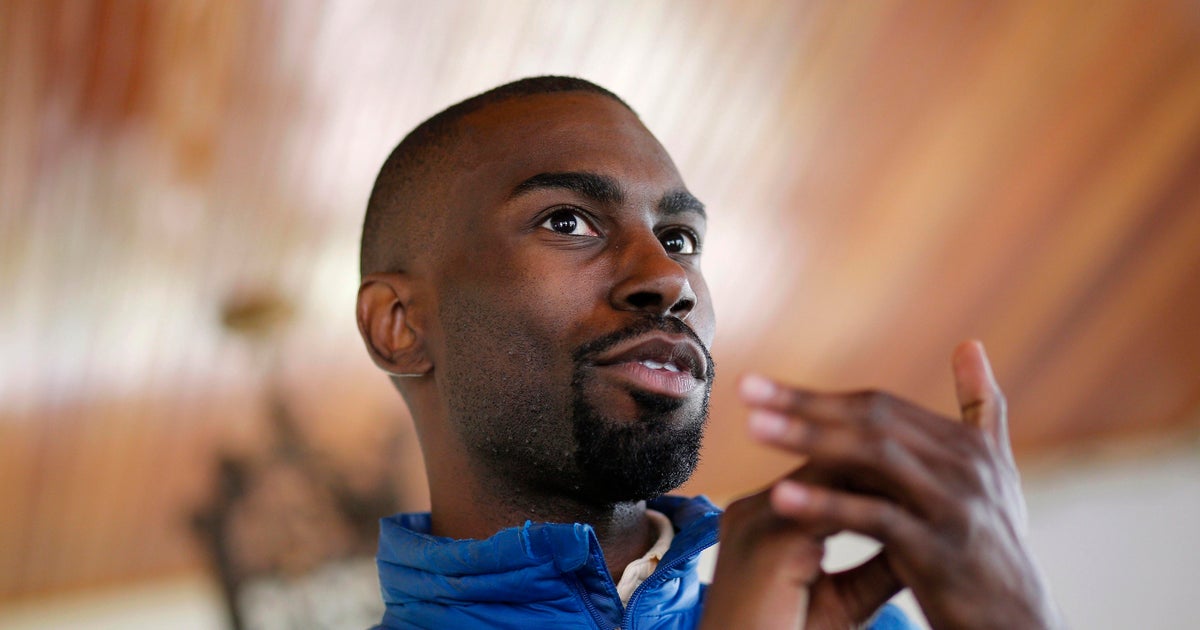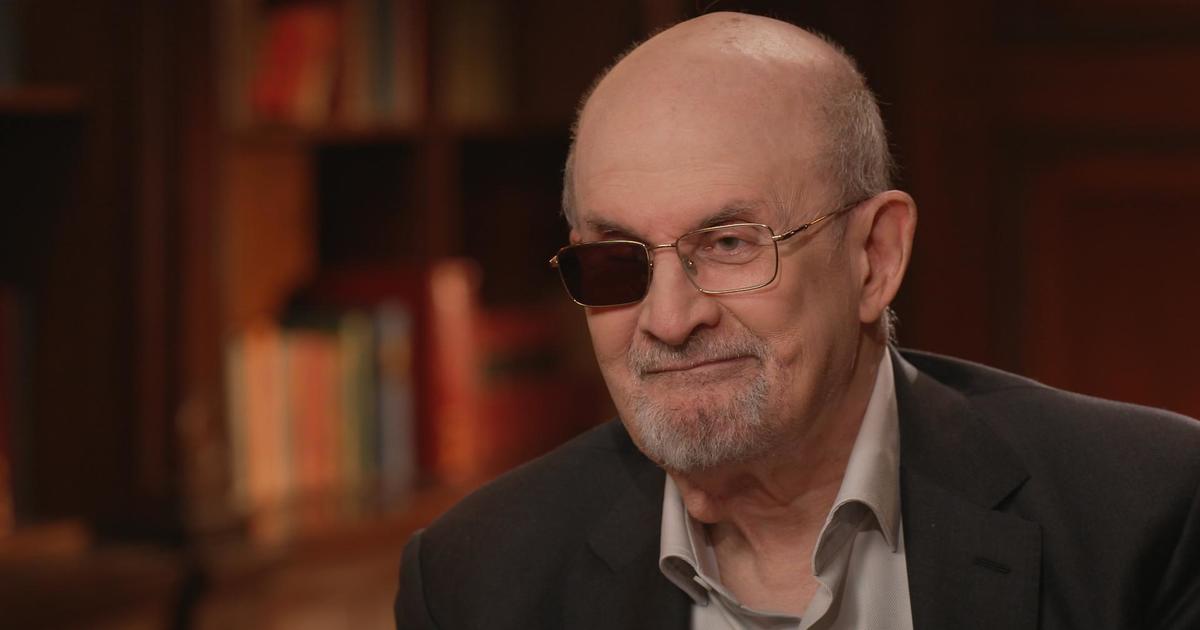Power to the people: The rise of the Black Panthers
Half a century has passed since the Black Panthers first came on the scene. They were champions of equality to some -- dangerous subversives to others. The surviving Panthers, including one of its most prominent leaders, are still working to make their party's case, as Lee Cowan reports:
The Black Panther Party may have dissolved more than 30 years ago, but you'd never know it from the looks of a recent gathering at an Oakland restaurant.
They had reconvened briefly to celebrate the 80th birthday of one of the Black Panthers' founders, Bobby Seale.
He's a little rounder these days, and perhaps a little slower. But at 80, Seale hasn't lost a flicker of the fire that helped change the political landscape of the 1960s.
"This was all 'power to all the people,'" he said. "We was beyond just power to black people."
Time hasn't dulled the sharpness of their swagger; the leather jackets, the berets, and the guns. For many, the Black Panthers and their defiant image remain as relevant and as controversial today as ever.
Take Beyoncé: When her dancers borrowed the Panthers' iconic look at last year's Super Bowl, both praise and criticism flew.
"It was a complete revelation to how the Panthers continue to capture the imagination," said Rene de Guzman, who recently curated the "All Power to the People" exhibit at the Oakland Museum. It drew some of the biggest crowds he's ever seen.
"Not in my wildest dreams could I imagine a Black Panther show being a blockbuster," he said.
Perhaps that because the Panthers have become as much pop culture as political party. Their message was branded with contemporary but often inflammatory artwork. They were the first to use the term "pig" to refer to the police, which to this day remains as offensive to police officers as the Black Panthers intended it to be.
Why a pig? "Well, a pig for them was a dirty animal, it was an animal without morals, and it was also a very dangerous animal," said de Guzman.
Their approach raised eyebrows and tempers all around the country. But they were not without structure. Seale wrote a strict 10-point platform -- the Party's founding principles -- on a legal pad that somehow managed to survived all these years.
He hasn't seen it in years, but Seale can recite every word to this day. It demanded (among other things) access to better housing, education, and an end to police brutality.
Cowan asked, "Do you think this is still relevant today?"
"Every nickel of it," he replied.
The Panthers first got national attention when members marched, armed, to the floor of the California State Assembly, taking advantage of the gun laws at the time that allowed a firearm to be carried openly.
It wasn't just a stunt; it was an extension of the Panthers' armed citizen patrols. They had been formed to monitor -- some would say intimidate -- the police.
"The cops said, 'You can't observe me,' and we'd recite the law," Seale said. "'You cannot remove personal property without due process of law. Step back! You cannot touch my weapon. It is private property!' And some black dude standing there said, 'Man, what kind of negroes are these?'"
Seale was Chairman of the Black Panthers, while Huey P. Newton was its Minister of Defense. In 1967 he was arrested for fatally shooting an Oakland police officer. "Free Huey" became the party's rallying cry, and after four trials, Newton's case was eventually dismissed.
"How much did Huey's trial really galvanize the movement?" Cowan asked.
"It wasn't Huey; Dr. Martin Luther King getting killed galvanized the movement," Seale said.
The tone of a Black Panther rally was more in-your-face than the often polite protests of Dr. King. Although they claimed this was all about self-defense, they also called for revolution -- a violent one, if need be.
"You can jail the revolutionaries, but you can't jail a revolution!" they chanted at one rally.
Many critics saw it not as a movement, but a criminal enterprise filled with those willing to sacrifice anything for the cause.
"We knew that the system that had enslaved us could not remain in place, because it was that system of capitalism on the backs of African slaves that created our state of oppression," said Elaine Brown, who rose to become the first female chair of the Black Panther Party. "For me there was no turning back. Once you say you believe in something and you're ready to live and die for it, then that's what you do."
Some did die, on both sides of the struggle. When police raided a Panther headquarters in Chicago, a shootout left one of the movement's most charismatic leaders, Fred Hampton, dead. And all hell broke loose.
The Panthers called it murder; police called it self-defense.
"The immediate, violent criminal reaction of the occupants in shooting at announced police officers, emphasizes the extreme viciousness of the Black Panther Party," said Cook County State's Attorney Edward Hanrahan following the raid.
"We were, from the beginning almost, the targets of the Federal government," said Brown. "J. Edgar Hoover, by 1968, was saying the Black Panther party was the greatest threat to internal security of the United States."
Hoover even brought his concerns about the Panthers to President Nixon, who on recordings can be heard on a telephone call pondering how the FBI could be used against them:
Nixon: "On a case-by-case basis, you could determine when you would want the Bureau to get in. In other words, where you sort of had the scent of the smell of a national conspiracy thing. You know, the kind of thing like the Panthers, and all that…"
Hoover: "Like the Black Panthers, the Students for a Democratic Society."
Nixon: "Something where it's basically that kind of an action."
"Found the tape, baby -- smoking gun evidence that the Nixon administration, starting with Nixon himself, this dude was giving directives to get rid of these Black Panthers," said Seale.
Age has mellowed Bobby Seale's view of marrying activism and guns. Case in point: the Black Lives Matter movement, also born in Oakland, that is still fighting police brutality 50 years later.
Cowan asked, "When kids come up and ask your advice today about guns, you tell them?"
"You don't need guns today," Seale replied. "The cell phone is the best piece of technology we got to observe cops. You can have an international cop watch program without a gun."
That's where Seale says the Panthers went wrong -- letting their militant protests overshadow what he saw as their larger purpose: community service.
The Panthers organized free breakfast programs for kids long before public schools in this country started doing the very same things. There were health clinics, too; food drives; voter registration drives; even an ambulance service.
"The purpose of the Panther programs was to provide a model, a living model for what American government should be doing," said Stephen Shames, who documented it all as the Panthers' unofficial photographer.
It was the softer side of the Panthers that his photos often captured. Many never saw the light of day until he compiled them into a book for the Panthers' 50th anniversary.
"Panthers were parents," Shames said. "Panthers were lovers. You see the Panthers with their wives and girlfriends. You see the Panthers with their children. And you just see the tenderness. I think that's what didn't come out with the militant image that was in the media of marching, wearing the leather jackets, wearing the berets."
"The party was not just some group of thugs, or social do-gooders, or whatever, do-badders, if you like," said Elaine Brown. "We were an organization that had goals and had an agenda and had an ideology, and that shapes everything I do right now, and has for the past 40 years."
Brown continued working as a community organizer and activist long after the Black Panthers began to fray as a party in the early '80s. She worked for prison reform then, and still does.
She recently organized an urban garden, for example, to help inmates who she says were jailed unfairly because of their race get a new start by selling the produce that they plant and pick.
"This is a continuation of what we did do in many ways," Brown said. "It's not exactly, but it's what I can do."
A bright corner in this still-impoverished section of West Oakland where the Panthers were born.
By the way, it wasn't just former Black Panthers who were at that party for Bobby Seale -- there were plenty of young activists there, too, looking to an older generation for answers about race and justice, and how best to affect the change that the Panthers had hoped would have come long ago.
For more info:
- bobbyseale.com
- "Power to the People: The World of the Black Panthers" by Bobby Seale, photographer Stephen Shames (Abrams)
- Follow @BobbySealecom on Twitter and Facebook
- Oakland & the World Enterprises
- stephenshames.com
- "All Power to the People: Black Panthers at 50" at the Oakland Museum of California (Exhibition closed)
- "All Power to the People" Reading List (pdf)
- Black Panthers Walking Tour in San Francisco (detour.com)
